V-2 Rocket, La Coupole
Museum and History Center, Wizernes,
France
Special thanks: Ed
Straten, Benno Janssen, and W. Reymers
On the weekend of June 20-21, 1987,
over 20,000 visitors gathered at the massive
domed V-2 bunker, Coupole
d'Helfaut-Wizernes, codenamed "Schotterwerke
Nordwest," in Wizernes, France. The event
was an open house and inauguration ceremony
for a new museum complex to be constructed
at the infamous bunker site.
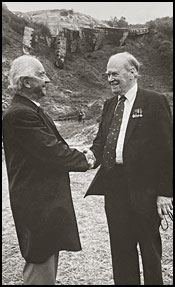
|
The
festivities that weekend included
guest speaker Professor R.V. Jones,
former member of the War Cabinet
Defence Committee (Operations) and
MI6 who helped target the bunker
during WWII. Jones highlighted the
importance of Wizernes as the
world's first missile silo and its
unique role in rocket development
history. A key representative on the
German side was former Todt Chief
Engineer Werner Flos, regarded as
the highest-ranking survivor of
Organisation Todt. In 1942, Flos was
tasked with constructing the
V-weapon bunker projects in France.
The former adversaries Flos and
Jones met in a fascinating encounter
for those who witnessed it.
Under
Werner Flos, Organisation Todt
began operations in 1943,
constructing a massive bomb-proof
dome measuring 71 meters in
diameter and five meters thick at
the cliff top. Additionally, many
kilometers of underground tunnels
were excavated by migrant laborers
before Allied bombing compelled
the Germans to abandon the site.
In 1986 the regional
French authorities allocated 10
million francs to establish a new
Second World War museum, focusing on
four themes: the Atlantic Wall and
Pas-de-Calais guns; Occupation and
Resistance; the Battle of Britain;
and the V-2 development.
In
the early 1990s, the developement of
the site progressed. French
authorities completed the
strengthening and construction of
lateral tunnels to create a
circular path extending several
hundred meters. The project also
included a lift shaft, carefully
excavated in the rock, designed to
safely transport visitors beneath
the dome. With this initiative,
visitors to the site would
experience a more enriching tour
when exploring the iconic site.
Significant structural engineering
was required to safely create a
spacious interior museum.
|
Additionally, during this period La
Coupole director Yves Le Maner began the
work of acquiring artifacts and displays
for the new museum. Le Maner secured
donations or purchases of original V-2
and V-1 parts from esteemed American and
British institutions. The Royal Air
Force supplied a stored V-2 engine from
RAF Museum Cosford, while the Science
Museum in London and Cranfield
University contributed parts from a V-1,
including its propeller
anemometer/odometer.
-
PHOTOS ABOVE:
COUPOLE D'HELFAUT-WIZERNES IN
1983. WILLEM REYMERS MADE THESE
IMAGES SHOWING THE BUNKER PRIOR
TO DEVELOPMENT
|
-
-
Around 1994 the National Air
& Space Museum in Washington, DC,
deaccessioned SI D19750821000, which
consisted of heavily deteriorated V-2 parts
from the Marshall Space Flight Center in
Huntsville, Alabama, many of which had
significant rust. NASM also donated another
group of V-2 parts, including a heavily
damaged V-2 hull that had been on loan to
the Florence Air & Missile Museum in
South Carolina since 1980, which had rusted
outdoors for twelve years.
|
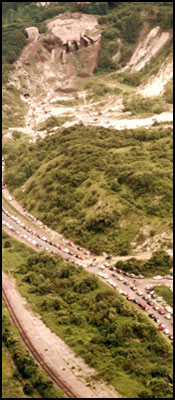
-
WIZERNES OPEN HOUSE 1987
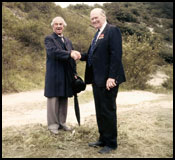
-
WERNER FLOS, R.V. JONES, 1987
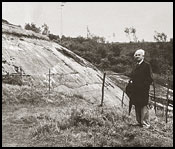
-
WERNER FLOS, WIZERNES, 1987
|
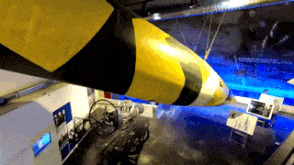
|
The La Coupole/Wizernes Museum V-2 was built
in 1995-1996 at the Didier Féramus S.A.
workshops in Blendeques. The
museum first unveiled the V-2 rocket in
the year 1997, marking its debut to the
public audience. This notable event took
place a full decade after the museum’s
establishment, highlighting the evolution
and development of the institution during
that time period. It is uncertain
which parts of the missile are refurbished
originals and how much is newly constructed,
as most deteriorated components from NASM
were found to be unusable. Féramus
referenced Peenemünde plans in the Munich
archives for new fabrication, suggesting
that a substantial portion of the missile is not
original manufacturing—which is
understandable considering the poor
condition of what they had to work with.
La Couple Museum
Homepage
Wizernes V-2
Bunker
|
BELOW: DETERIORATED V-2
COMPONENTS AND EARLY CONSTRUCTION
BELOW:
LA COUPOLE MUSEUM PHOTOS
BELOW:
LA COUPOLE ENGINE ASSEMBLY

|

